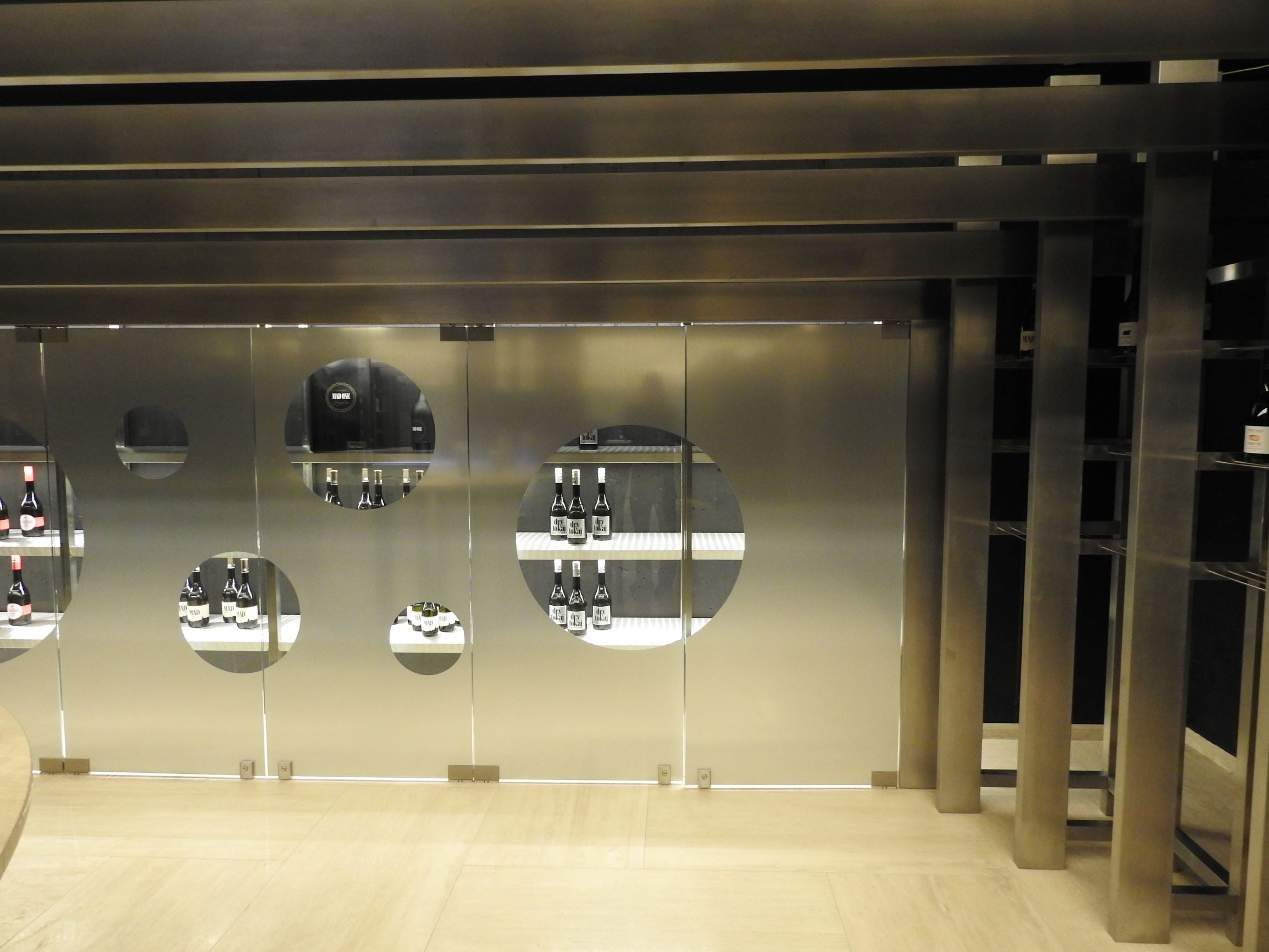We are at Tokaj-Hegyalja and Mád, again. It is a great place to have wine tours. Plenty of quality establishments with impressive winery and tasting rooms, restaurants. Well, Szent Tamás is definitely one of those places. Founded by 2 businessman and István Szepsy Jn in 2009, located in the contemporary Aszúház, with a bar-restaurant.
It has an interactive wine installation, a staircase that lights up and gives music notes when you step on them, then ultimately leads you to the Wine Vault, where the tasting happens. It is a custom designed, well-lit, glass-marble basement room with wines and minerals on display and with more interactive gadgetry. It is all very high-tech. You do feel like you are in a bank vault, although I have never been in one before. It was well over the top.
The winery owns 25 hectares of vineyards mostly around Mád. They have parcels in Szent Tamás, Percze, Nyulászó, Úrágya, Dongó, Birsalmás crus, however some plots can be found also in Tállya, Rátka and Tarcal. They own couple of parcels of 50-60 years-old free-standing vine, though most of their vines are cordon trained. Yields are highly restricted; the grapes are hand harvested and protected from oxidisation at every level.

Their aim is to introduce new techniques, methods to the area whilst remaining true to the local tradition and furthering the recognition of Mád within the Tokaj region. That is why the Szent Tamás Winery is member of Mádi Kör (Circle of Mád), a quality conscious association of local growers. Their regulations go over and beyond wine laws and sets even stricter guidelines for members to be able to achieve unique, terroir-driven quality wines with limited releases from selected single vineyards, but also making commune or village wines.
They do buy grapes in from local smallholders for commune wines if the growers are ready to work within their standards. These crisp, fruity, easy-drinking, lighter style of wines usually fermented in temperature-controlled steel tanks with no cultured yeast in sight. Although, this last bit is true to their whole range.
Again, Furmint is the star grape here, but they also bottle some varietal Hárslevelű (Lindenleaf) and late harvest blends with Sárgamuskotály (Muscat Blanc á Petit Grains or Muscat Lunel) and aszú too. They use Vinolok glass stoppers for maximum freshness, but cork and screw top bottles also included in their portfolio for different types of wines. They produce single vineyard selections, dry selections, a late harvest (called 3909, which is the postal code of Mád). The dry, single vineyard releases and the sweet wines are fermented and matured in first, second and third filled 3-500l Hungarian oak barrels coming from the surrounding Zemplén Forrests.
Although, Tokaji Aszú bottle, has a fairly well-known shape (0,5l), few years ago a new design was introduced with different bottle sizes, like (0,75l), half bottle (0,375l), and magnum (1,5l), instigated by the Szent Tamás Winery.
About the tasting. Here, everything is about the slightly controversial minerality. (I have already written a post about it and planning on writing another one.) So much so, that the different soils and igneous rocks, result of the heavy volcanic activity in the area millions of years ago, are displayed with detailed projected maps to identify their origin and effect on the wines.
The other idea which I was a tad surprised of, the ‘thermal water’ quality in some wines. If you happen to visit Mád, you can hear very often about this ‘thermal watery’ bouquet. Mostly they say it is the result of the natural terroir as being on volcanic soil where thermal springs burst out fairly often. To be fair it sounds pretty fantastic! I mean I think it is just plain and simple VSC, in other words, a form of reduction. I do not think that they are polyfunctional thiols as in Sauvignon Blanc, because Furmint is not an aromatic variety. It is more like very low amounts of H2S (Hydrogen Sulfide) or DMS (Dimethyl Sulfide). I mean, if you read between the lines: protected from oxygen at every level, stainless-steel, although some barrel fermented and aged (luckily!), no cultured yeast, Vinolok, screw top. That is just seems inevitable. Fortunately, it dissipated fairly quickly, and it was not that bad. However, cooked corn and slight sulphuric hard-boiled egg aromas popped out of the glass in couple of occasions. It was more prevalent in the Mád range wines, like the Mád Furmint 2105 and Mád Hárslevelű 2014. The vineyard selected ones, as they aged and fermented in barrels, were definitely cut above the average. I loved the Percze Furmint 2015 and Percze Hárslevelű 2013, but Szent Tamás Furmint 2013 was by far the best. The Szent Tamás Szamorodni 2013 was excellent as well as the Szent Tamás 6 puttonyos aszú 2013.
Photographs by The Tannin Addict.